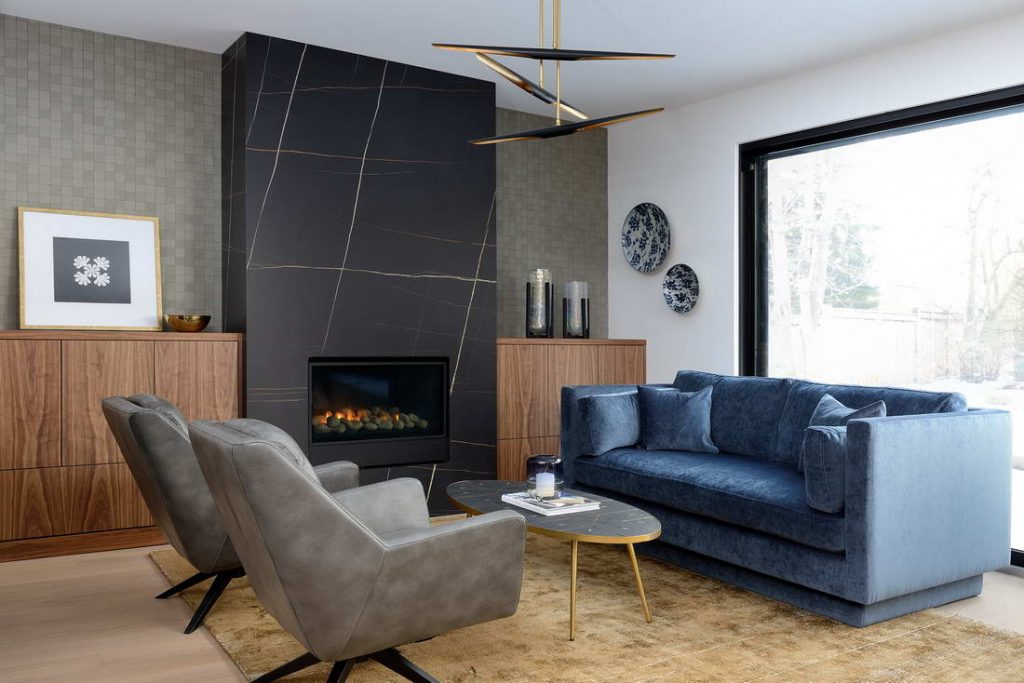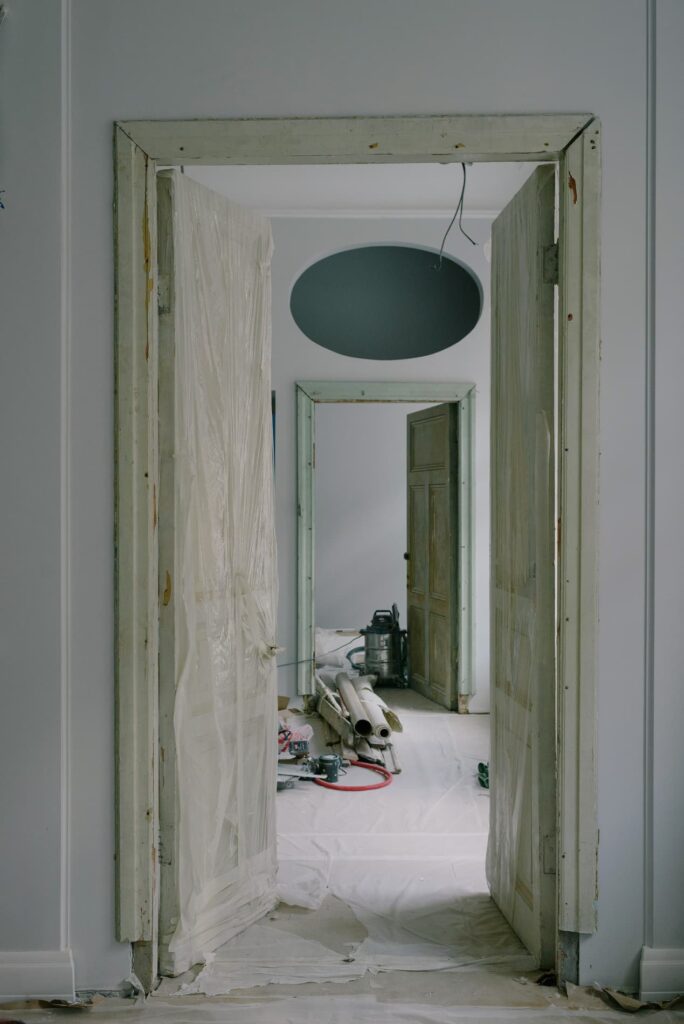One of the popular design ideas many homeowners are considering is vaulting a ceiling. Although some people have reservations about vaulted ceilings, they continue to appeal to homeowners looking to add a lofty, dramatic appearance to their space. Many people also like how vaulted ceilings make rooms look larger and allow more natural light in. By adding skylights, even more light can shine in.
If this type of ceiling appeals to you, you might be wondering whether vault ceilings is an option for you. In this blog, we’ll discuss all things vaulted ceilings, including advantages and considerations before installing one in your home.
Key Takeaways
What is a Vaulted Ceiling?
A vaulted ceiling is a ceiling design that is constructed in an upward arch, giving a curved appearance. Some have more angular slopes, making an A-shape.
Vaulted ceilings are constructed by installing self-supporting arches above the wall space, right under the roof. They are architecturally stunning and give a grand, airy appearance to the space, reminiscent of Gothic cathedrals and Roman domes. As a result, vaulted ceilings are often referred to as cathedral ceilings.
Vaulting a ceiling is an advanced project, but it can be taken on by DIYers with engineering and carpentry knowledge and experience. If you do decide to vault your ceiling yourself, be sure to obtain a permit and consult a structural engineer and electrician.

Understanding the Basics of Vaulted Ceilings

First, it is important to know your local building codes and get the necessary permits. It is also key to understand a few terms that will be used throughout this post.
As part of ensuring the ceiling’s structural safety, you’ll need to pay attention to the rafters, joists, and trusses.
Some of the joists and trusses will need to be removed to install a vaulted ceiling. This means you’ll need to replace them with other support mechanisms, which will be removed after the ceiling’s installation. One way of doing this is to remove all the joists and nail boards along the rafters’ sides through a process known as sistering, in addition to adding collar beams, also known as collar ties.
Collar beams are horizontal pieces that extend from rafter to rafter, but much higher up. You can picture the horizontal part of the A-shape, but much higher. Another way is to remove the joists, then add a beam that runs all the way along the roof ridge with each end supported by vertical posts.
Considerations Before Vaulting a Ceiling
Ventilation – You’ll also need to think about the roof’s ventilation so that there’s no buildup of heat between the roof and the ceiling’s drywall. You can get the air flowing by adding gable or soffit vents. With gable vents, you need two on each side of the roof peak. If you opt for soffit vents, each rafter bay will need its intake and outtake vent.
Space – Ceilings are convenient places to conceal ductwork, HVAC equipment, plumbing vents, and wiring. When it comes to vaulted ceilings, it’s more complicated because of the limited space between the ceiling and roof. It’s advised that you hire an electrician to help you with the rewiring and an HVAC professional to help you modify the system, since you’ll likely need a bigger system to heat and cool your home with a vaulted ceiling.
Structure – Chimneys are easy to work around if the part of the chimney that extends into the attic is finished. If not, then there’ll be an extra cost to add.

With these considerations in place, we can now focus on the actual vaulted ceiling construction.
Essential Tools and Materials
To build a vaulted ceiling, you’ll need the following tools:
- Circular saw
- Cordless drill
- Electric miter saw
- Hammer or pneumatic nailer
- Ladder or scaffolding
- Pry barrel
- Reciprocating saw
- Safety equipment (dust mask, goggles, work gloves, etc)
You’ll also need the following materials:
- Collar beams or ties
- Drywall (or whatever ceiling material you’re using)
- Finishing materials (paint, etc)
- Insulation material
- Lumber (for backing)
- Nails
- Screws
- Two-by-fours
- Two-by-tens
How to Vault a Ceiling
Be sure to consult professionals when more expertise is needed. Certain types of vaulted ceilings might also be best left to experts. This is recommended especially for wiring and drywall installation stages. You can hire a general contractor who can consult with an architect, structural engineer, HVAC technician, etc., as needed.
A general contractor is also helpful when acquiring the necessary building permits. Some building codes may require a professional to install the ceiling because of the structural changes that are often needed.

Step 1: Prepare the area. Clear the workspace. Move furniture and other fixtures. Remove everything that is on the joists. This could be the HVAC vents, insulation, lighting, or wiring.
Step 2: Remove the existing drywall. To protect your floor or floor covering, consider either removing the floor covering altogether or placing plywood on the floor.
Step 3: Support the roof. You’ll need a vertical support structure that stays in place when you remove elements of the roof. A common support structure is a temporary wall made out of two-by-fours that extends from the floor to the roof ridge. If there is a basement or crawlspace under the floor where you’re working, then you’ll need extra reinforcement under the floor.
Step 4: Remove the webs, which are the smaller parts of the trusses. As for the joists, you can remove them as well or cut them to within 2 or 3 feet of the wall. These will form the perimeter of the ceiling. Do this removal or cutting work carefully so that you maintain the structural integrity of your home.
Step 5: Sister the rafters. Nail two-by-ten boards to the sides of the rafters to help support the weight of the roof.
Step 6: Add the collar beams or ties to the rafters.


Step 7: Remove the temporary wall.
Step 8: Construct the perimeter ceiling. You can either build it from scratch or use the cut joists. The lights will be added to the perimeter. When you complete the rest of the construction, the ceiling will blend into the walls along the perimeter.
Step 9: Install electrical wiring and lighting.
Step 10: Insulate the ceiling. Proper insulation will make the room as energy efficient as possible. The most common insulation choices are fiberglass, rigid foam, or spray-in foam. The best insulation option will depend on your ceiling’s rafter depth as well as the local climate. Spray-in foam with a high R-value is ideal when your rafters are less than 5.5 inches deep, as other forms of insulation may not be sufficient. It is generally the go-to option because it is versatile.
Step 11: Add the drywall. Place the drywall along the perimeter ceiling. After this, add the drywall compound and let it dry. Once it dries, you can then smooth it by sanding it down.
Step 12: Paint the drywall. This can either be done with paint rollers attached on long poles or by using a scaffold to move around and paint. Let it dry, and just like that, your vaulted ceiling is complete.


